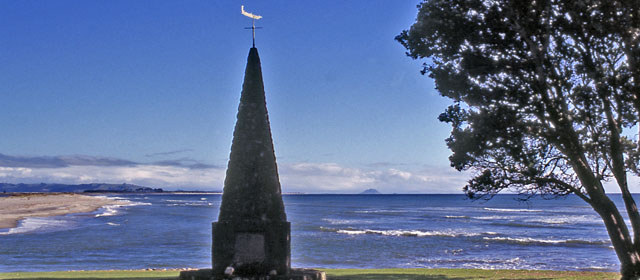Story summary
Lands and tribes
The traditional lands of the Te Arawa people are around the Rotorua lakes. Te Arawa tribes today include Ngāti Pikiao, Tūhourangi and Ngāti Whakaue.
Tamatekapua’s journey
In Te Arawa tradition, the ancestor Tamatekapua and his relatives set out for New Zealand from Hawaiki in a double-hulled canoe. After a shark rescued the crew from being eaten by a huge sea creature, the people renamed their canoe – and themselves – Te Arawa, after a species of shark.
Settlement
Tamatekapua and his people explored the North Island’s coast by canoe before settling in Maketū, in the western Bay of Plenty. Some of the group, including the explorer Īhenga, travelled south and settled around the Rotorua lakes, where they were able to use the geothermally heated water and steam, as well as the lakes’ fresh water.
Rangitihi was an important ancestor. His eight children and their descendants became known as Ngā Pūmanawa e Waru (the eight beating hearts).
Conflict
Competition among Ngāti Pikiao, Tūhourangi and Ngāti Whakaue sparked conflict within Te Arawa. These disputes were sometimes settled though marriages, and the groups also banded together to fight enemy tribes.
In 1823 Ngāpuhi, led by Hongi Hika and armed with muskets, attacked Te Arawa. The tribe took refuge on Mokoia Island in Lake Rotorua, armed only with traditional weapons. The invaders took them by surprise, and there was a great loss of lives.
In the 1860s Te Arawa fought alongside the government against the tribes of Waikato and the East Coast, and against guerrilla leader Te Kooti. But some of the tribe’s lands were lost after the wars.
Tourism and volcanoes
The area’s dramatic scenery and geothermal attractions drew many visitors in the 19th century. Te Arawa people often acted as guides, and Ngāti Whakaue leased land to the government to build the spa town of Rotorua. When Mt Tarawera erupted in 1886, the famous Pink and White Terraces at Rotomahana were lost. The tourist guide Sophia Hinerangi had seen a mysterious phantom canoe on Lake Tarawera shortly before the eruption – often considered to be a premonition of the disaster.
Migration
After the Second World War, many Te Arawa drifted to the cities in search of work. In 2013, there were more than 51,000 Te Arawa people.
Claim settlement
Te Arawa's claim to the Waitangi Tribunal concerning the Rotorua lakes was settled in 2006 with an apology from the Crown and a recognition of Te Arawa's mana (authority) over the lakes.





